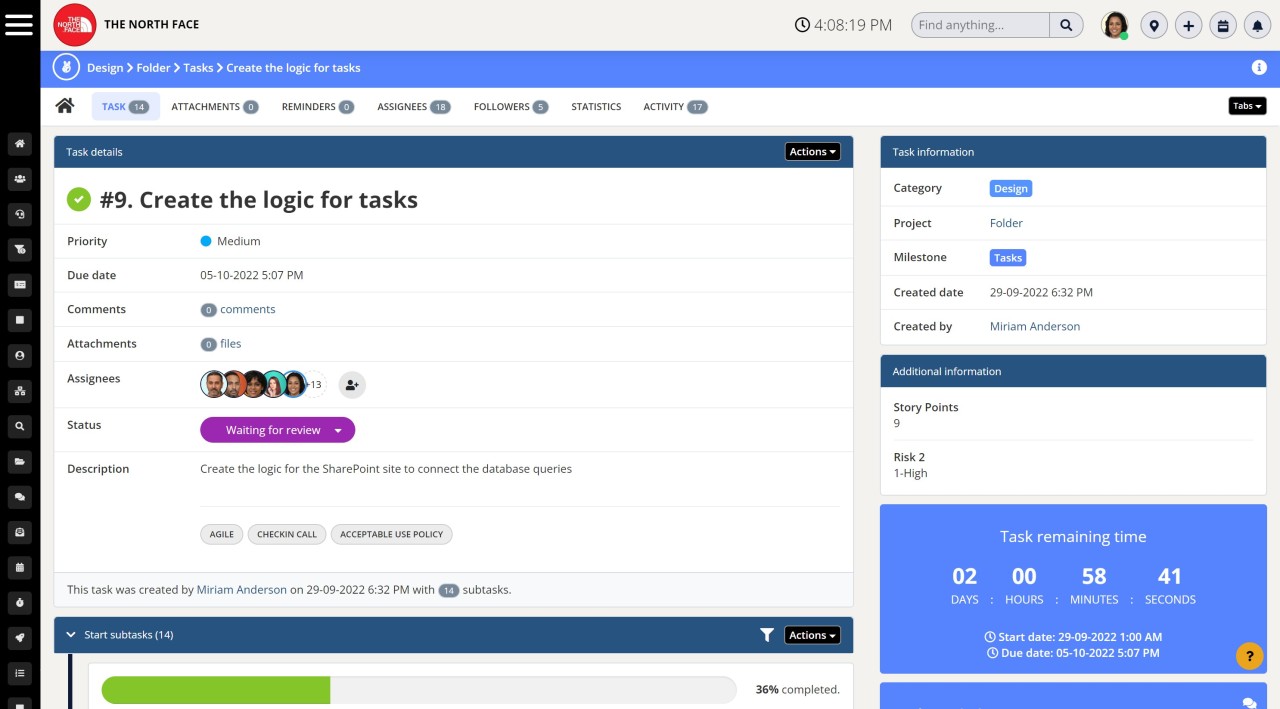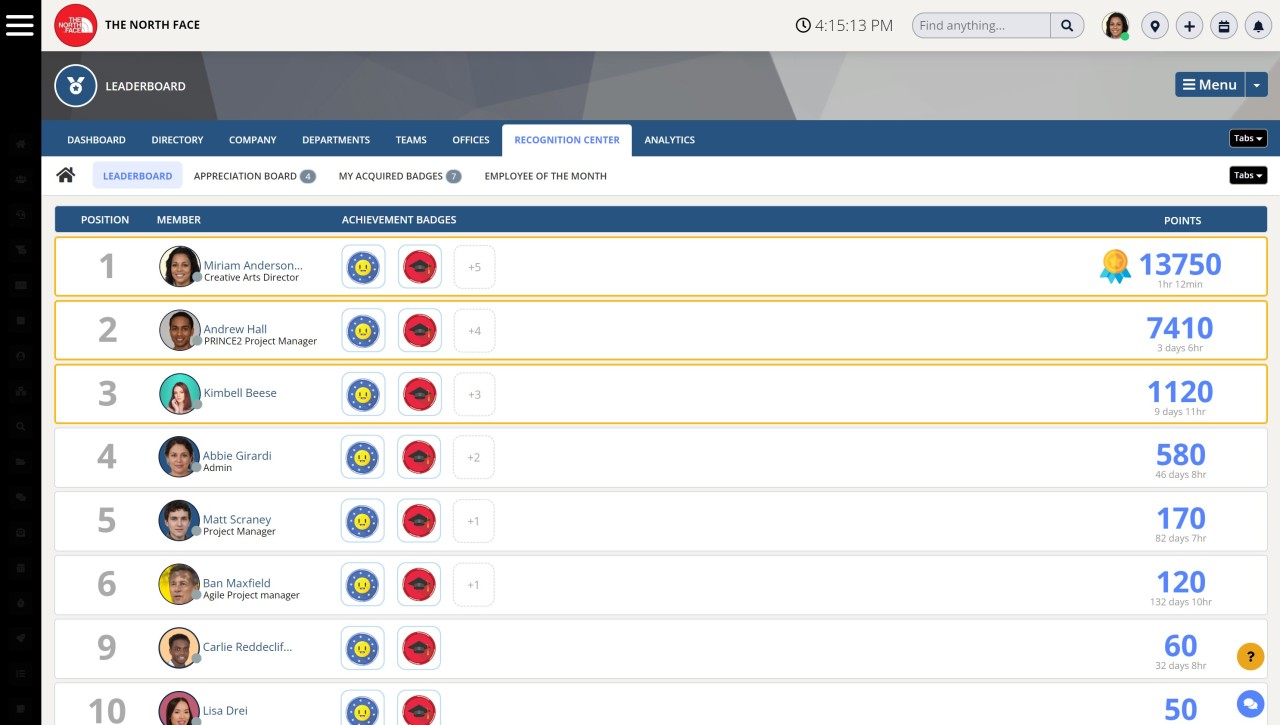Insight Blog
Agility’s perspectives on transforming the employee's experience throughout remote transformation using connected enterprise tools.
12 minutes reading time
(2366 words)
Digital workplace: What do you need to do for it to be beneficial for your business?
A digital workplace encompasses all aspects of day-to-day business operation. But the question is is it beneficial for your business?
The foundation of the workforce is shifting after the pandemic. New collaboration and social tools are joining the ranks of more traditional corporate resources like modern intranets, HR, and finance systems. These are introducing novel possibilities to businesses and facilitating improved internal communication and collaboration among employees.
Similarly, consumer technology is developing rapidly, altering virtually every facet of life. These days, it's not uncommon for people's own devices, like smartphones and tablets, to be more sophisticated and connected than their workplace equivalents.
As a result, businesses are feeling pressure to adopt consumer-grade technologies and open the door to more agile work schedules.
Demographic shifts are also impacting, albeit a bit slower, compared to the technological ones. There is a merging of work and personal life, as evidenced by the rise of remote work and improved remote tools to help alternative work schedules.
The term "digital workplace" is a catch-all phrase for the broader electronic working environment for employees; it describes the whole and how its parts function.
Not easily accomplished without serious consideration, these shifts must be more than a passing trend.
A digital workplace can bring many benefits here are just a few:
- Increased Flexibility and Agility
- Improved Productivity
- Reduces the Time Wasted
- Better Unified Communications
- Better Employee Engagement
- Cost Savings
- Eliminate Silos
- An Empowered Workforce
Employing a method of communication tailored to the digital workplace
Quality of communication is what matters most, not quantity. To maintain mental space for concentrated work, there should be times during the day and the week when workers can choose to ignore notifications, alerts, and ad hoc messages. This harmony between individual effort and teamwork is largely made possible by the company's prevailing style of communication.
And for businesses to maintain their communication quality, the right communications technology is required to orchestrate the delivery of content that is tailored to each employee's specific areas of interest and times of highest concentration. If not addressed, the "always on" mentality can cause burnout and a loss of connection between workers and the company as a whole, both of which contribute to high turnover rates. Similarly, if you want to create a communications strategy that values diversity, you'll need to use data insights to learn about the optimal frequency, medium, and subject matter for each of your employees. This is tied to investing in a unified communications platform.
That platform should combine the multiple systems and endpoints while providing a seamless, intuitive digital experience that can be tailored to meet the needs of those at a desk and in the field.
Here are 3 great examples of the best Digital workplace cloud apps for small businesses:
- AgilityPortal - is all about being able to move quickly and efficiently in response to change. In the digital workplace, agility is essential for keeping up with the ever-changing landscape of technology and workflows. The AgilityPortal is a digital workspace that helps organizations be more agile by providing a central place for all their digital tools and resources. With the AgilityPortal, teams can quickly find the information and assets they need to get their work done, regardless of where they are or what device they're using. The portal also makes it easy to share information and collaborate with others, which further enhances AgilityPortal. In short, the Agility Portal is a powerful tool for helping organizations be more agile and responsive to change.
- ThoughtFarmer - is digital workplace app that helps organizations to improve communication and collaboration. It is a One-Stop Social Intranet that provides users with a central location to find the people and information they need. The software includes features such as: activity streams, blogs, wikis, Discussions, forums, projects, and micro-blogging. ThoughtFarmer also has advanced features such as: document management, Single Sign On, workflow automation, and integration with popular business applications. Overall, ThoughtFarmer is an extremely powerful and user-friendly social intranet solution that can help any organization to improve communication and collaboration.
- Igloo - is a digital workplace software company that helps organizations improve communication and collaboration. Igloo's software is designed to create a central hub for all of an organization's digital content and tools, making it easy for employees to find and use the information they need. Igloo's features include document management, task management, chat, and video conferencing. Igloo also offers integrations with popular productivity tools such as Google Drive and Microsoft Office 365. Igloo's digital workplace software is used by organizations of all sizes, from small businesses to Fortune 500 companies.
Collaboration in a digital workplace
The internet has fundamentally altered the modern workplace.
A digital workplace and helpful technologies did not exist a generation ago, but both have become increasingly commonplace. However, the focus on technological advancement has not eliminated the need for people to communicate with one another. To get things done, we still need to work together.
Organizations can't afford to ignore the benefits of digital collaboration any longer.
Only by taking a digital approach to collaboration will businesses survive the current pandemic, better manage their teams, and increase productivity.
In today's digital workplace, collaboration is more important than ever.Here are five benefits of collaboration:
- Increased creativity and innovation - When people work together, they can bounce ideas off of each other and come up with creative solutions that they may not have thought of on their own.
- Improved communication - Working together in a collaborative environment can help people improve their communication skills by learning how to better express their ideas and listen to others.
- Enhanced problem-solving ability - Collaborating with others can help people develop new ways of thinking about and solving problems.
- Greater motivation and productivity - People are often more motivated to do their best work when they feel like they are part of a team working towards a common goal.
- Better decision-making - When multiple people are involved in the decision-making process, different perspectives can be considered, leading to better decisions overall.
Social engagement
This is crucial to maintaining employee enthusiasm and commitment to the company's mission. It is also essential in developing a positive work environment. More importantly, social engagement can provide organizations with valuable insights and feedback that can help the company implement ideas that will resonate with its talent pool.
The level of communication between most frontline teams is low. Management is always available to hear concerns from frontline staff. They are allowed to communicate with one another, but usually only during the same shift.
That's pretty much it if you don't have a company email account or access to a portal or intranet. This is no longer the case thanks to modern intranets like AgilityPortal, which provide tools for employees to communicate with one another regardless of shift differences or physical locations.
It provides a forum where they can discuss issues, get help from others, and have their opinions heard.
As the world becomes increasingly digitized, it's important to find ways to connect with others that are easy and convenient. Social engagement platforms like Facebook and Twitter provide users with a way to do just that.Here are five benefits of social engagement platforms:
- They promote communication and interaction: By connecting people from all over the world, social engagement platforms provide an opportunity for users to communicate and interact with each other. This can lead to new friendships, business opportunities, and cultural exchange.
- They offer a sense of community: For many people, social engagement platforms offer a sense of community that might otherwise be lacking in their lives. These platforms provide an opportunity for users to connect with others who share similar interests, values, and experiences.
- They're convenient: Social engagement platforms are easy to use and offer a variety of features that make communication and interaction easy and convenient. For example, most platforms allow users to share photos, videos, and links with other users.
- They're accessible: Social engagement platforms are accessible to anyone with an Internet connection. This means that users from all over the world can connect and engage with each other regardless of location or time zone.
- They're affordable: Most social engagement platforms are free or have very low monthly subscription fees. This makes them an affordable option for those who want to stay connected with others without breaking the bank.
Digital workplace security
Facilitating the transition to remote work, digital workplace solutions have been indispensable. Benefiting workers and businesses, remote work has made nearly as easy as in-office hours. Having a centralized hub for all of an organization's data has streamlined operations and made life easier for everyone involved, but it also leaves the business vulnerable to cyberattacks.
When a company's digital workplace solution is attacked, business as usual grinds to a halt because that's where the work gets done. That's why it's crucial for businesses to take measures to protect their digital workplaces.
In a world where more and more businesses are moving their operations online, digital workplace security is more important than ever.
There are a number of features that can help to keep your data safe and secure, including:- Encryption: This is a process of scrambling data so that it can only be read by authorized users. This can be particularly useful for sensitive information, such as customer records or financial data.
- Access Control: This refers to the ability to restrict access to certain areas of the network or specific files. This can help to prevent unauthorized users from accessing sensitive information or making changes to critical systems.
- Firewalls: A firewall is a system that helps to block unauthorized access to a network. This can be particularly effective in preventing hackers from gaining access to your systems.
- Intrusion Detection: This refers to the ability to identify when someone is trying to gain unauthorized access to a system. This can help to raise an alarm so that appropriate action can be taken.
These are just some of the most important digital workplace security features that businesses should be aware of. By implementing these measures, you can help to protect your data and keep your business operations running smoothly.
Read more: What is an Intelligent Digital Workplace?
Embrace change and encourage growth
As technology has made it possible, more and more people are choosing to work remotely from their homes.
In addition to having more say over when, where, and how they get their work done, employees also benefit from a culture of increased trust and autonomy.
Productivity rises when there is more trust between employers and employees. As a result of not having to travel to and from work, workers are able to devote more of their attention and energy to their jobs.
Knowledge management
Companies must devise novel strategies to facilitate communication amongst their various teams and divisions as more employees take on remote roles. Many businesses were unprepared for the disruption of established information dissemination channels, like casual conversations around the water cooler or between coworkers in an office.
The inability to access and disseminate tacit knowledge or identify experts, as well as the existence of siloed or disparate teams, can all lead to knowledge gaps in an organization. Knowledge gaps have repercussions for businesses and their staff in the form of decreased productivity, a negative employee experience, and a lack of insight into the availability of critical competencies within the organization.
A knowledge management system (KMS) is a IT application that captures, stores, indexes and maintains an organization's collective wisdom. It includes five primary benefits:- A KMS Helps Organizations Be More Competitive - By sharing best practices and lessons learned across the enterprise, a KMS helps an organization to be more innovative and faster to market with new products and services. Additionally, a KMS provides employees with easier access to the latest information and tools they need to do their jobs more effectively.
- A KMS Encourages Collaboration - A KMS fosters collaboration by making it easy for employees to find and connect with experts inside and outside of the organization. Employees can also quickly locate subject matter experts (SMEs) who can provide answers to questions or help resolve issues.
- A KMS Improves Customer Service - By providing employees with quick and easy access to the latest product information, pricing data, manuals, procedures, etc., a KMS helps improve customer service response times and first contact resolutions rates. Additionally, many knowledge management systems now include features such as chatbots and virtual customer assistants (VCAs) that can provide 24/7 self-service support for customers.
- A KMS Reduces Costs - A KMS can help reduce operational costs by automating tasks such as onboarding new employees, processing customer inquiries, etc. In addition, by making it easier for employees to find answers to their questions without having to rely on more expensive support channels such as phone calls or face-to-face meetings, a KMS can help reduce training and support costs.
- A KMS Makes It Easy To Comply With Regulations - By storing critical corporate information in a central repository, a KMS makes it easy for organizations to comply with regulations such as Sarbanes-Oxley (SOX), the Gramm-Leach-Bliley Act (GLBA), the Health Insurance Portability and Accountability Act (HIPAA), etc. Additionally, many knowledge management systems now include features such as version control and document expiration dates that can help ensure that only the most current versions of documents are accessible by employees.
Read more: Top 10 Benefits of a Knowledge Base in 2022
Conclusion
A new and innovative approach is necessary for the digital workplace to keep up with the needs of the modern workforce. While there are certainly obstacles to overcome when implementing new digital initiatives, businesses that get their feet wet now will have a distinct advantage in the long run. Companies must prepare their employees for the digital workplace by doing more than just adopting new technologies.
Categories
Blog
(2590)
Business Management
(318)
Employee Engagement
(204)
Digital Transformation
(172)
Intranets
(119)
Growth
(118)
Remote Work
(61)
Sales
(48)
Collaboration
(37)
Culture
(29)
Project management
(29)
Customer Experience
(26)
Knowledge Management
(21)
Leadership
(20)
Comparisons
(5)
Ready to learn more? 👍
One platform to optimize, manage and track all of your teams. Your new digital workplace is a click away. 🚀
Free for 14 days, no credit card required.
















